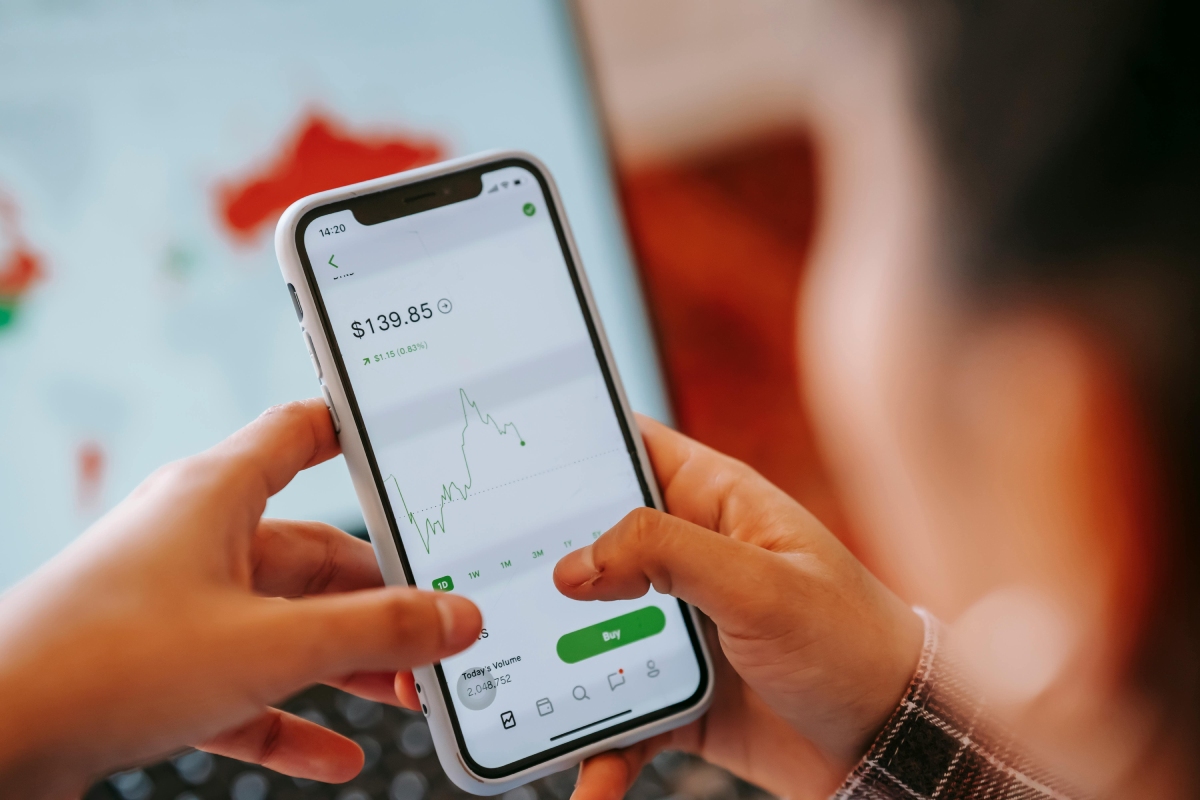Investing for beginners with little money is easier than you might think. You don’t need to be rich to grow your wealth. In fact, when you start matters more than how much you have. As one finance blog notes, “the biggest factor is when you start investing, not how much you have to start. Even a few dollars can go far if you know what to do with it”. Starting early—even with small investments—lets time and compound interest work in your favor Below are five practical tips to help young beginners start investing with little money and make the most of every penny.
1. Save First and Invest Small Amounts Consistently
Even saving $10 or $20 a month makes a difference. Experts advise that setting aside any extra cash and investing it is a great first step. For example, if you spend $4.99 on coffee, round up to $5 and invest the $0.01 in a micro-investing app. Many apps (like Acorns, Moneybox, or your local banking app) will round up purchases to invest spare change. Over time, these small investments that make money through compound interest can really add up. Remember: you don’t need a lump sum to begin. As one site puts it, even a few dollars, invested wisely, can get your portfolio growing.
- Automate your saving: Set up a recurring transfer (even $5/week) into an investment or savings account. The consistency habit is key.
- Use spare-change investing: Apps often link to your debit card and invest the change from purchases.
Saving first means you’re paying yourself before other expenses. This discipline ensures you always have something to invest, answering the question “how do I start investing with little money?” by showing that even a little can grow. Over time, those consistent deposits can leverage the power of compounding to boost your savings.
2. Choose the Right Apps and Fractional Shares for Beginners
Technology makes it easy to start with very little. Many investment apps and platforms are designed for beginners and support fractional shares, letting you buy part of an expensive stock for just a few dollars. For example, eToro and Trading212 are popular international apps that offer zero-commission trades and fractional ownership. Wise (the money app) even lets you hold money in stock funds or currencies.
- eToro – A social trading app (available globally) that lets you copy other traders and buy fractional shares with no commission.
- Trading212 – A UK/EU app offering free stock/ETF trading and fractional shares, great for small budgets.
- Wise (Stocks & Crypto) – Known for low-cost currency exchange, Wise has an “Assets” feature where you can invest small amounts in selected stock funds.
- Revolut or Freetrade – Apps in Europe that allow free stock trading; they also support tiny share purchases.
By using these platforms, you’re tapping into easy ways to invest money with minimal capital. For example, fractional shares mean you could buy a 0.001 portion of a $3,000 stock for just $3. This opens the door to big companies (Amazon, Tesla, Apple) even with a few dollars. In short, if you ask “how can I invest my money” when funds are low, the answer is to use these beginner-friendly apps. They handle the math of tiny trades, so you can earn money with a small investment over time as those small positions grow.
3. Diversify with Low-Cost Funds and ETFs
Putting all your money in one stock is risky—especially when you’re starting small. Instead, focus on diversification. Low-cost index funds and ETFs (exchange-traded funds) let you spread your investment across many companies or even entire markets. For example, an S&P 500 ETF contains pieces of the 500 largest U.S. companies. Buying one share of an ETF gives you a slice of dozens or hundreds of businesses.
“Mutual funds and ETFs are a great way to diversify your portfolio and lower your risk. They allow you to invest in a range of companies and industries”.
You can buy ETF shares through the same apps (eToro, Trading212) or robo-advisors. Some robo-advisors (like Betterment, Wealthsimple or eToro’s portfolio feature) will automatically allocate your small investment into a mix of index funds or bonds. This answers “how to invest with little money” by using one easy vehicle to gain broad exposure. Even if you only have €50 or $50, you can buy a fraction of an ETF share. Over time, as markets (and your savings) grow, these funds let your small contributions participate in that whole growth.
- Tip: Look for commission-free ETFs (many apps offer them) and low expense ratios. Example ETFs: Vanguard S&P 500 (ticker VOO), or regional ones like iShares MSCI ACWI for global exposure.
4. Reinvest and Think Long-Term
To start investing with little money, the next tip is to be patient and let returns compound. Whenever your investments pay dividends or interest, reinvest those payments rather than cashing them out. This automatically buys you more shares over time. One easy way is to turn on “dividend reinvestment” in your brokerage: any dividends you earn are used to buy a bit more stock or fund shares.
This strategy uses compound interest – earning returns on your returns. For example, that $5 you saved might earn $0.10 in dividends, which then earns its own tiny dividends later. It snowballs: an investment blog notes that “even a small amount consistently invested over time can grow through the power of compound interest”.
Also, keep a long-term mindset. Markets fluctuate, so avoid panic-selling when values drop. Instead, view your small investments as “money that works for you” over years. If possible, use tax-advantaged accounts (like a Roth IRA, ISA, or superannuation, depending on your country) – even small contributions there can grow faster thanks to tax benefits.
- Stay consistent: Add small amounts regularly rather than waiting for a big chunk.
- Diversify risk: Along with ETFs, you might put a tiny percentage in safe assets (bonds, gold) for balance.
- Control fees: Pick platforms with low or no commissions so fees don’t eat up your gains when you earn money with a small investment.
5. Keep Learning and Stay Motivated
Investing is a journey. As a young beginner, take time to educate yourself so you feel confident. Read blogs, watch tutorials, or join (free) investing communities. Understand basic terms like risk, diversification, and index funds. The more you learn, the smarter your small investments become. Ask questions like “how to start investing” or “how do I start investing with little money” and seek answers from reputable sources.
Set realistic goals (e.g. saving for travel or education) and track your progress. Celebrate milestones even when small – every contribution counts. Also, beware of “get rich quick” schemes; scams often target novices. Stick to straightforward strategies: start small, diversify, and think long-term.
By applying these tips consistently, even beginners can turn minimal capital into a growing portfolio. Remember, you don’t need millions to invest – you just need a plan and the patience to watch your small investments make money over time.









Leave a Reply